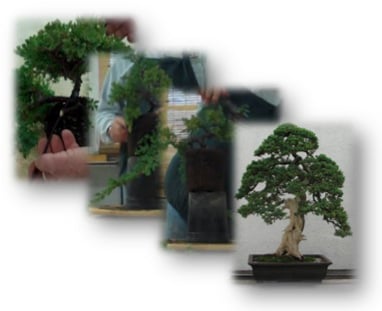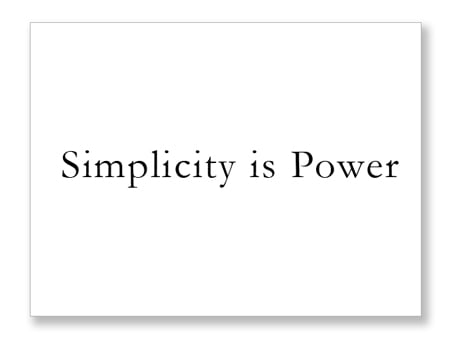 |
Thomas F. Carlucci Partner Foley & Lardner LLP |
 |
John E. Turlais Senior Counsel Foley & Lardner LLP |
 |
Ryan H. Flax (Former) Managing Director, Litigation Consulting A2L Consulting |
There is a certain irony in providing high-level litigation and litigation consulting services. Namely, if we, as litigators and litigation consultants, do our jobs correctly, the end product – whether it be a presentation to a jury or to the government – should be simple.  For this reason, it can be difficult for some clients to appreciate the value of the process required to create that end product, even when that end product serves the ultimate goal of a trial win or a favorable settlement. A simple end product, however, most often signifies a deliberate, detailed, and thoughtful process.
For this reason, it can be difficult for some clients to appreciate the value of the process required to create that end product, even when that end product serves the ultimate goal of a trial win or a favorable settlement. A simple end product, however, most often signifies a deliberate, detailed, and thoughtful process.
Foley & Lardner LLP and A2L Consulting recently collaborated on a project relating to an elaborate fraud carried out through numerous, complex transactions. The fraud was executed over many years and related to dozens of contracts and hundreds of thousands of pages of documents. Complicating matters further, the case proceeded on parallel litigation tracks, with civil claims being pursued by numerous sophisticated entities, while the U.S. Government investigated criminal charges. From all this, a presentation had to be prepared boiling down the complexities and complications to a simple, straight-forward, and persuasive position.
Crafting a winning litigation presentation, including the accompanying litigation graphics, can be analogized to writing a song. Take most anything the Beatles ever wrote, for example. Once you have heard the song, it seems simple – so simple, in fact, that you might proclaim: “I could do that, I could write a song.” Until you actually try doing it.
The Beatles created world-changing art, and they made it look easy. What winning litigation teams and litigation consultants strive to do is similar in that, to achieve their goals, they must take complex fact patterns and legal positions and make them both easy to understand and persuasive. They must make the case look easy.
Simplify the complex is the first rule in developing both a litigation narrative and the litigation graphics that elucidate it. Unlike the trial attorneys or line prosecutors, a jury has not “lived” with a case for many years. Nor, for that matter, do government attorneys high in the chain-of-command necessarily have the same deep understanding of the facts and intricacies of a case as do their investigators or line prosecutors. Dumping all of the facts on the table in the hope that the audience will latch on to a winning argument almost invariably leads to another result – confusion and, ultimately, failure. The key is to present the evidence and information in a manner that can be easily digested by those who, based on limited time and/or limited exposure to the case, want and need to see the big picture.
Making the complex simple, however, takes time, creativity, and hard work. As Blaise Pascal (French mathematician, physicist, inventor, writer, and philosopher) famously said, “I would have written a shorter letter, but I ran out of time.” (often also-attributed to Mark Twain and Abraham Lincoln). But it is through this process that value is generated.
 Ideally, and when a litigation team employs a litigation consulting and litigation graphics firm, the process involves a bit of a witches’ brew. A lot of facts, ideas, theories, and storylines get thrown into the pot, and the attorneys, litigation consultants, and litigation artists must work together to explore and decide what facts fit and which story lines are most persuasive. The process is rarely straightforward and smooth, and it involves occasionally wandering down dead ends to find the right path. But this process is necessary to chip away at marginal, unnecessary, and/or potentially distracting and detracting portions of the case.
Ideally, and when a litigation team employs a litigation consulting and litigation graphics firm, the process involves a bit of a witches’ brew. A lot of facts, ideas, theories, and storylines get thrown into the pot, and the attorneys, litigation consultants, and litigation artists must work together to explore and decide what facts fit and which story lines are most persuasive. The process is rarely straightforward and smooth, and it involves occasionally wandering down dead ends to find the right path. But this process is necessary to chip away at marginal, unnecessary, and/or potentially distracting and detracting portions of the case.
The team of litigators must deal with thousands of discrete and related facts, sometimes millions of pages of documents, and, often, multiple interested parties forwarding their own versions of the case to the same target audiences. The litigators must figure out how to refine the mountains of information into a neat and compact outline of evidence that tells a compelling narrative. The litigation consultants and graphics firm must then take the evidence that the attorneys believe most important, understand the narrative forwarded by the trial team, and push the attorneys to further hone and sharpen the presentation of their case. The graphics must be developed with equal precision so that a narrative emerges from the slides that not only emphasizes the key evidence, but also provides simple and persuasive themes.
 At the end of the process, the team is left with a streamlined and seemingly simple presentation that the audience can readily understand and, more importantly, be compelled to agree with on some level.This streamlined and simple end-product, however, is often all the client sees as well. The work that goes on behind the scenes – the effort and expense needed to develop the themes, to frame the evidence, and to refine the message to its basic core – constitutes the majority of the work that goes into the case. When done correctly, it should look easy, as if anyone could have done it. Most importantly, clients should recognize that this is precisely the value added by their litigators and litigation consultants.
At the end of the process, the team is left with a streamlined and seemingly simple presentation that the audience can readily understand and, more importantly, be compelled to agree with on some level.This streamlined and simple end-product, however, is often all the client sees as well. The work that goes on behind the scenes – the effort and expense needed to develop the themes, to frame the evidence, and to refine the message to its basic core – constitutes the majority of the work that goes into the case. When done correctly, it should look easy, as if anyone could have done it. Most importantly, clients should recognize that this is precisely the value added by their litigators and litigation consultants.
In simplicity, there is power. Give the right people the power to create simplicity, and you, as client, will get astonishing results (that look easy).





Leave a Comment